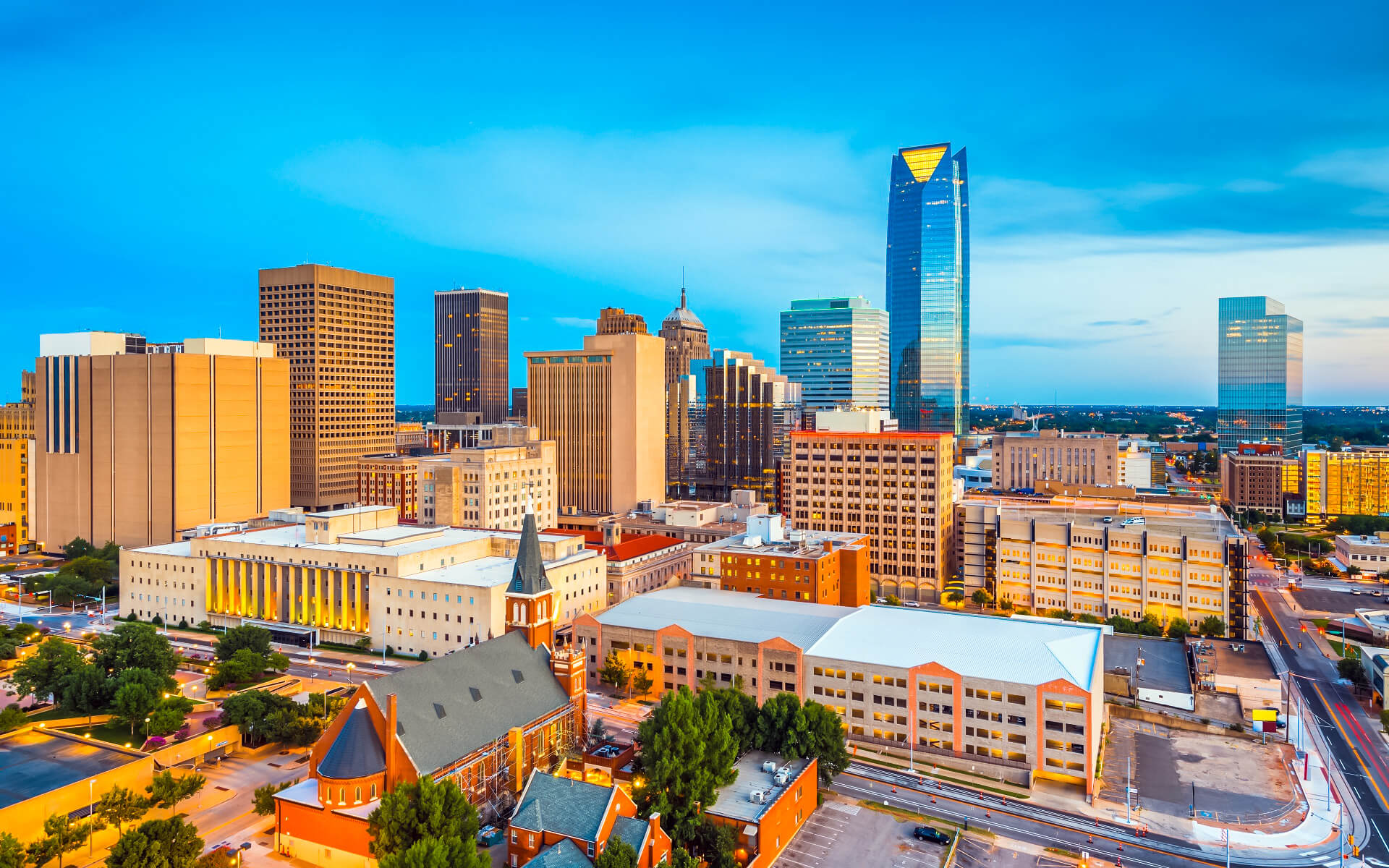Oklahoma City is the state’s biggest city and the political, cultural, and economic engine. The city is the third biggest in the United States in terms of land size (608 square miles), behind only Jacksonville, Florida (759 square miles) and much behind Anchorage, Alaska (608 square miles) (1698 sq miles). The city is the 29th biggest in the United States (506,132 residents as of the 2000 census), and the largest among the five “plains states” (Oklahoma, Kansas, Nebraska, and North and South Dakota). After decades of suburban sprawl and a failed downtown “urban renewal,” a’sudden’ burst of investment in the 1990s provided the city with additional big city attractions and a pleasant quality of life that is frequently the envy, if not surprise, of visitors from other cities, transforming Oklahoma City into a tourist destination in and of itself. Oklahoma’s state capital building is the only one in the world to be built on top of an oil well. Although it is legally known as Capitol Site #1, it is affectionately known as Petunia #1 due to the fact that it was initially drilled in the center of a flower bed.
THINGS TO SEE
Numerous attractions are situated in downtown or on the town’s north side. Bricktown, the city’s rapidly growing entertainment district and tourist draw, the new Oklahoma City Museum of Art, which houses the world’s largest collection of Chihuly glass as well as an arthouse/revival theater and a restaurant, and The Myriad Gardens, an impressive urban park with a seven-story botanical garden, are all highlights in downtown. The Oklahoma City National Memorial and Museum is located north of the museum. The monument is both one of the city’s most conspicuous and saddest sights, which has created some difficulties for the city’s tourist agency. The outdoor symbolic monument is free and open 24 hours a day, although a modest charge is required to attend the extremely well-done Memorial Museum (placed in the old Journal Record Building next door).
While many of the districts immediately around Downtown are classic instances of urban decay, to the northwest of downtown is a cluster of intriguing early twentieth-century communities near the Oklahoma City University campus. The most prominent are The Paseo, a run-down artist colony nestled in a 1930s urban area, and “Little Saigon,” or the Asia District, as it is officially called, which is home to the city’s sizable Vietnamese and East Asian communities. The Paseo was established in the early twentieth century in deliberate imitation of Kansas City’s Country Club Plaza, but has since gained a gritty bohemian vibe that sometimes seem like a breath of fresh air. The neighborhood is densely packed with dozens of art galleries, cafés, apparel boutiques, and other associated companies. Although the Paseo is technically simply a single street lined with deco Spanish revival buildings, it has expanded to embrace a large portion of the surrounding neighborhood, including a length of stores on NW 23rd Street, which serves as the Northwest side’s primary thoroughfare.
The Asia District is located west of The Paseo along Classen Boulevard. It is home to the city’s predominantly Vietnamese Asian population. Oklahoma City was one of the places chosen by the US government to relocate refugees after the fall of Saigon in 1976. Since then, further immigrants from Vietnam and other southeast Asian countries, as well as Vietnamese Americans from other parts of the US, have joined these early refugees. The neighborhood is home to a plethora of excellent eateries, much too many to list, as well as Super Cao Nguyen Supermarket, the state’s biggest Asian market.
Oklahoma City University is located just west of the Asia District and contains a modest art museum as well as a variety of cultural events and activities.
To the north of Oklahoma City University are the “NW 39th Street Enclave,” the state’s largest GLBT neighborhood, Crown Heights, and the Western Avenue District, which are home to businesses and restaurants catering to young urbanites (Sushi Neko, a fine sushi bar, and Will’s, a coffee shop, both located within the restored art deco Will Rogers Theater complex, are worth a visit).
The capital complex, which is notable in and of itself, is located on the northeast side of the city, as is the Oklahoma History Center. There is a large and expanding concentration of medical research northeast of Downtown, concentrated on the OU Health Science Center, although unless you are a patient, a doctor, or a scientist, you are unlikely to spend much time there. (However, if you like old architecture, the historic Lincoln Terrace district between the OUHSC and the state house is worth seeing.) On NE 16th street, the Harn Homestead is also situated close.
North of the capitol is the “Adventure District,” which includes the highly regarded Oklahoma City Zoo, the National Cowboy and Western Heritage Museum, and the Kirkpatrick Center (which houses a children’s science museum, an air and space museum, and a photography museum, among other things), as well as Remington Park and Casino, a thoroughbred and quarter horse racing track with a casino and off-track betting.
The Southside is most known for Capitol Hill, a significant Hispanic neighborhood, and the Stockyards, a neighborhood constructed around one of the world’s biggest cattle markets. Cattle are still purchased and sold there on Monday mornings, much to the chagrin of PETA and other local activists who may sometimes be seen demonstrating nearby. The Stockyards has some resemblance to a wild west-themed amusement park, without the rides. There are shops offering just about everything related to the west, from saddles to belt buckles to extremely enormous hats. One of the only locations in town where your newly acquired enormous hat will go mostly unnoticed is the historic Cattleman’s Steakhouse, which has been serving substantial steaks and “lamb fries” (a nice phrase for fried bull testicles) for more than a century.


